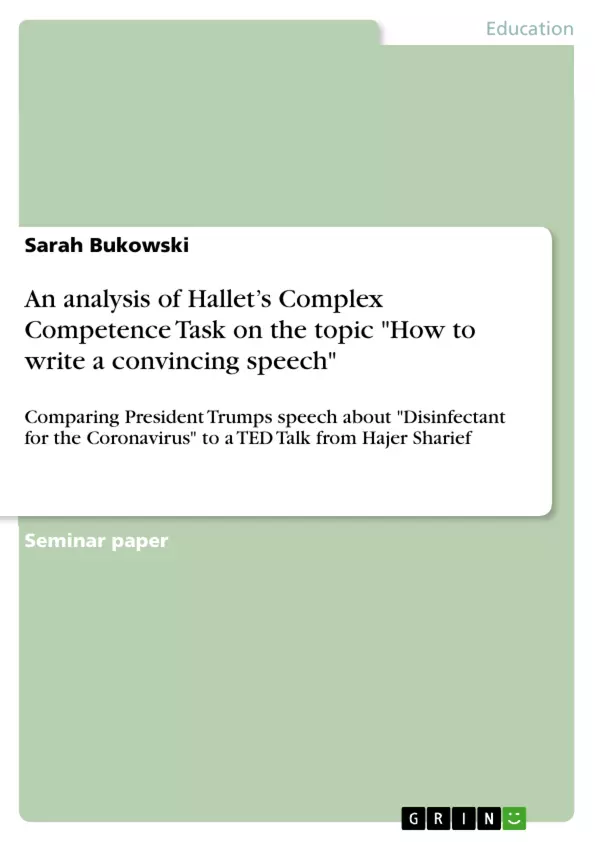My hypothesis is assuming whether the Complex Competence Task (from hereon CCT) by Wolfgang Hallet (2012) can cover all essential aspects and reduce the expense of planning a lesson for various learners in a heterogeneity classroom.
At first, I want to analyze and briefly describe the lifeworld aspect I want to cover. Moreover, I will explain my chosen planning instrument, the CCT, and expound its purpose. Additionally, I will pose my hypothesis and finally lead over to the practical part of my paper. The plan mentioned above covers the theoretical part of the term paper. The second part will include the entire practical work of planning my lesson with the instrument and step-by-step explanations for the procedure of this lesson. Furthermore, the whole unit will be described with the main and subgoals, topics and subtopics, activities, and tasks for the students. For a qualitative lesson, I will also include examples of products to emphasize my expectations and give an insight of how the lesson might be. Finally comes the conclusion, therefore the reflective part of my paper, where I briefly sum up what I did in the paper. Further, I try to reflect my hypothesis and the usage of the Complex Competence Task. The final steps will be criticizing the planning instrument in a constructive way and giving examples of improvements for this instrument.
Inhaltsverzeichnis (Table of Contents)
- Introduction
- Theoretical Part
- Scaffolding and Media
- Lifeworld and the Complex Competence Task
- Practical Part
- The Lesson Plan
- Lesson Activities and Tasks
- Conclusion and reflection of the lesson for various learners
- Material
- Works Cited
Zielsetzung und Themenschwerpunkte (Objectives and Key Themes)
This term paper aims to analyze the effectiveness of the Complex Competence Task (CCT) as a planning instrument for lessons designed for diverse learners. The paper investigates whether the CCT effectively incorporates essential pedagogical elements while addressing the specific needs of a heterogeneous classroom. The primary focus is on integrating the lifeworld-oriented aspect of media into a lesson plan, utilizing the CCT as a framework.
- The importance of lifeworld-oriented lesson planning
- The role of media in contemporary education
- Analysis of the Complex Competence Task as a lesson planning tool
- Designing a lesson incorporating diverse learning needs
- Evaluation of the effectiveness of the Complex Competence Task
Zusammenfassung der Kapitel (Chapter Summaries)
The introduction sets the stage by outlining the challenges faced by teachers in planning lessons that cater to diverse learning needs. The paper introduces the Complex Competence Task as a potential solution and lays out the structure of the analysis. The theoretical part delves into the concept of lifeworld, highlighting its significance in education. This section further analyzes the Complex Competence Task, exploring its core principles and how it aligns with the chosen lifeworld-oriented aspect of media.
Schlüsselwörter (Keywords)
Key terms and concepts explored in this paper include lifeworld, media, Complex Competence Task, lesson planning, diverse learners, heterogeneous classroom, scaffolding, and educational pedagogy.
- Quote paper
- Sarah Bukowski (Author), 2020, An analysis of Hallet’s Complex Competence Task on the topic "How to write a convincing speech", Munich, GRIN Verlag, https://www.grin.com/document/1176139



